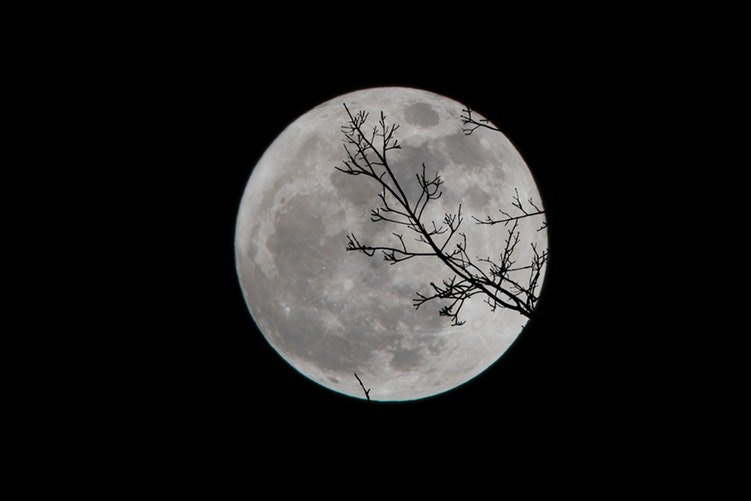Dylan Stoll | Copy Editor
Featured image courtesy of Unsplash
By 2020, if you happen to be in Chengdu, China, take a look at the night sky; you may notice something extraordinary.
At an innovation convention in Chengdu on October 10, Wu Chunfeng, chairman of Chengdu Aerospace Science and Technology Microelectronics System Research Institute Corporation, announced his plan to launch a satellite into orbit 500 kilometers above Earth, specially designed to reflect the light of the sun—just like the moon.
The ambitious plan is in response to the expensive street illumination in China’s larger, more active cities. The artificial moon could save the city of Chengdu $174 million when providing light for only 50 square kilometers. They plan to send three more after the first; if and when the following three are operational, they’ll be able to cover 3,600 to 6,400 square kilometers.
According to Chunfeng, extensive testing for the satellites began years ago, so hopefully, when the mini-moons are ready to be launched, there won’t be any problems.
Russia conducted launch tests in the 90s on a similar device, dubbed ‘The Znamya 2’, which was taken into orbit aboard the cargo spacecraft Progress. It was equipped with a 25-meter mirror capable of producing a bright spot on the Earth, 4.8 kilometers in diameter. The overall project was a failure, as the subsequent test of the Znamya 2.5, the Znamya 2’s predecessor, resulted in an entangling conundrum between one of the antennae of Progress, and the mirror itself. The mirror was irreparably destroyed, costing the Russians a pretty penny, and ending their audacious attempt indefinitely.
But in today’s day and age of species extinctions, deforestation, and global warming, it’s not the satellite that people are worried about; it’s the wildlife. Many animals are reliant upon the rather predictable nature of the moon. Be it for hunting, mating, or navigation, the moon is a powerful tool used by numerous nocturnal animals. With the addition of a second ‘moon’, there is a concern that these creatures of the night may be affected negatively by the increase in light exposure.
Alex Mills, an associate professor at York who has taught undergraduate courses in evolution, population ecology, conservation biology and animal migration, explains that “many organisms are light-sensitive.” Having completed his Master of Science on the influence of moonlight on nocturnal birds and bats, Mills further elaborates that “some species avoid night, some prefer night providing there’s some light (as in twilight or moonlight), and others prefer night without moonlight.”
The birds and bats that Mills studied are defined as “lunaphilic”, which means they are moon-active, as well as twilight-active, “but some bats are lunaphobic, meaning they do most of their feeding in the dark, without moonlight.”
When asked how he thinks night-active birds may be affected by the artificial moon, Mills says: “There is evidence in North America that breeding birds that are inactive by day, and inactive during dark night, but active during twilight and moonlight, are influenced by artificial anthropogenic light, such as is found in urban and suburban areas. It does affect their circadian rhythms, although I’m not sure anyone has shown it is costly for them.”
In regards to his own subject species, he describes that they “adjust [their] reproductive schedule to the lunar cycle (laying eggs at the time of the full moon). I suspect this kind of facility would interfere with that kind of cycle, because the light periodicity associated with the lunar cycle would disappear.”
Mills further notes that light pollution produced by cities is “a huge problem for migratory birds,” as countless birds have died colliding with commercial office buildings, houses, and apartment buildings, which are often kept lit at night. The best course of action to prevent this from happening is to remember to turn off all lights that are not in use, or use curtains, even when it’s dark outside. To learn more about how to help protect these birds, Mills recommends a citizen science group called FLAP (Fatal Light Awareness Program), based in Toronto.
Though the idea of an anthropogenically placed moon sounds totally out of this world, it may not be as far out as it seems—or rather, as far out as it should be. In an interview between Discover Magazine and Ryan Russell, an associate professor of aerospace engineering at the University of Texas, Russell said: “Their claim for one LEO (Low Earth Orbit) sat at [500 kilometers] must be a typo or misinformed spokesperson. The article I read implied you could hover a satellite over a particular city, which of course is not possible.”
According to Discover Magazine, geostationary orbital satellites, or satellites that maintain a fixed position over Earth, are only capable of doing so at approximately 35,500 kilometers. If Chunfeng and his team were to set their mini-moon at that height, the mirror would need to be much, much larger for anyone to even remotely see the light. And at a distance of 500 kilometers, the satellite would require thrusters, as well as a significant amount of refueling, to remain stationary, which simply wouldn’t be economically feasible.
So are they lying? We’ll just have to wait and see. One thing can be known for certain though: most people will be getting a good night’s rest under one moon, just as nature intended.


